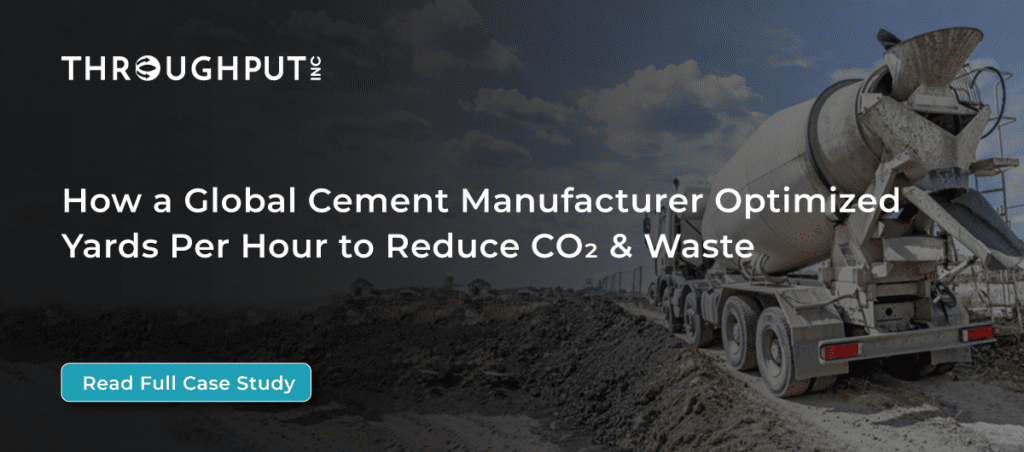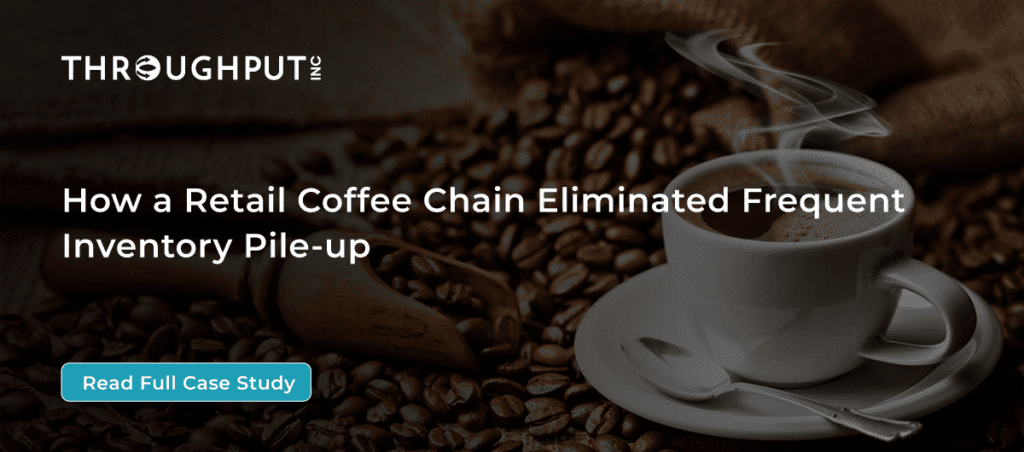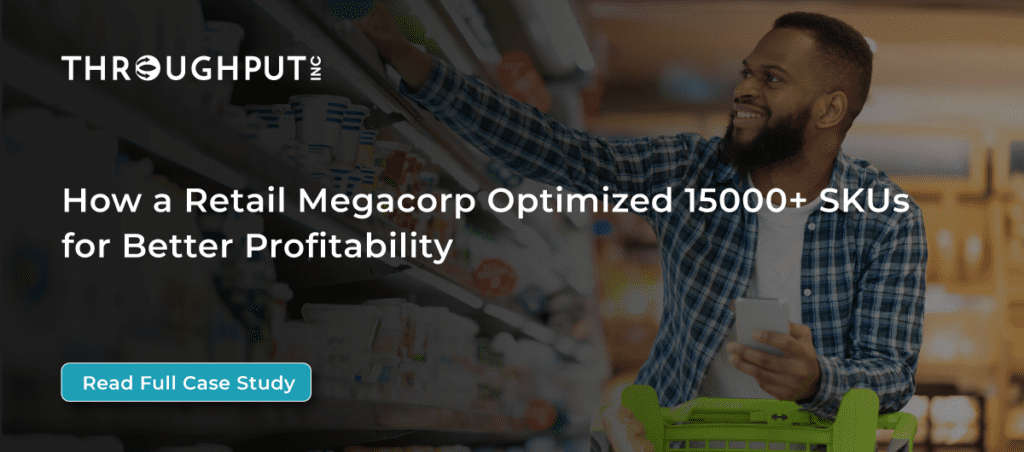If there’s any piece of technology or analytics that can help with the most advanced data-driven decision-making in the supply chain right now, that’s prescriptive analytics. It is the most promising form of analytics in the market currently.
What prescriptive analytics does is it combines the ability to forecast the future with powerful, actionable recommendations that can help you achieve the desired outcomes while considering the constraints, trade-offs, and potential impact of different available choices.
What Is Prescriptive Analytics in Supply Chain?
Prescriptive analytics is a type of advanced analytics that optimizes decision-making by providing recommended actions based on the insights gained from descriptive, diagnostic, and predictive analytics.
In the context of supply chain management, prescriptive analytics leverages raw historical data and performance data to determine the best probable courses of action, supporting supply chain decisions through network design, inventory and warehouse optimization, and supplier management.
Some of the crucial scenarios that prescriptive analytics allows companies to answer include:
- What does the customer want?
- What type of offer would be best for a customer?
- What should be the ideal shipment strategy?
- How should the supplier perform?
- How much should you scale up a business?
By using prescriptive analytics, companies can optimize their supply chain operations, reduce costs, and make better decisions, ultimately enhancing their overall supply chain performance.
How Prescriptive Analytics Has Been Driving Value In Supply Chain Optimization?
Prescriptive analytics plays a crucial role in the supply chain by leveraging algorithms to make forecasts based on current and historical data and then using the insights derived from this data to recommend constructive actions. This analytical approach empowers supply chain managers to not only connect the dots between trends, patterns, and associations but also make informed decisions.
With prescriptive analytics in place, businesses can significantly enhance the efficiency of their supply chain processes at scale. Through the collection and analysis of data, organizations can proactively address various challenges that may arise. This includes, for instance, tackling stock errors, damaged inventory, and demand miscalculations, leading to improved operational performance and cost savings.
Furthermore, the prescriptive capabilities offered by analytics enable organizations to navigate customer service concerns, labor unrest, and traffic patterns while saving precious time. By anticipating these factors, businesses can optimize logistics, mitigate disruptions, and ensure smoother operations.
In short, prescriptive analytics in the supply chain empowers businesses to make informed forecasts, proactively respond to future developments, and optimize their operations using smart recommendations.
Predictive vs. Prescriptive Analytics
Predictive and prescriptive analytics are vital in informing business strategies by leveraging collected data. Predictive analytics enables forecasting potential future outcomes, while prescriptive analytics goes a step further and assists in generating specific recommendations to meet the desired result.
These analytics techniques serve as essential tools to transform descriptive metrics into actionable insights and informed decisions. By integrating predictive analytics, businesses can anticipate future trends, identify potential risks, and make proactive decisions on their own based on the insights. This forward-looking approach provides valuable foresight and empowers organizations to navigate changing market dynamics more effectively.
Prescriptive analytics, on the other hand, also offers specific recommendations and actionable steps in addition to predictive capabilities. By considering various scenarios and utilizing advanced algorithms, prescriptive analytics enables businesses to determine the best action to achieve desired outcomes. It helps optimize resource allocation, enhance operational efficiency, and maximize overall performance.
According to Mick Hollison, the President of Cloudera, “Predictive helps keep up with the increasingly competitive landscape while prescriptive analytics offers smart recommendations to take the next step for a business process.”
6 Uses Cases Of Prescriptive Analytics In Supply Chain Optimization
1. Logistics Management
A major prescriptive analytics use case in supply chain management would be that of logistics management. Prescriptive logistics optimization solutions help supply chains discover new ways to team supply chain metrics and data from varied sources like delivery time estimates based on distance traveled daily, vehicle location details, and other essential metrics that affect logistics.
It then provides recommendations on how to streamline routes, optimize yards per hour, tackle potential risks, optimize resource utilization, and more in real time.
Here’s an example to further understand logistics management with prescriptive analytics.
Ready Mix Concrete is a tricky industry as far as the supply chain is concerned because the product, the ready mix concrete, can only be prepared on request as it solidifies very quickly. This means that production scheduling and truck dispatching need to happen like clockwork to maximize revenue and achieve customer satisfaction. In the case of one of Throughput’s clients, a leading Ready Mix Concrete (RMC) company, achieving maximum efficiency while meeting sustainability goals was a top priority.
ThroughPut, using its prescriptive analytics capabilities, analyzed existing data from multiple sources and:
- Developed a 360-degree customer scorecard taking into account multiple variables, including number of jobs, sales volume, load size, average distance to plants, and recall percentage to segment customers and suggest the most optimum customer mix.
- Suggested opportunities to enhance asset utilization by identifying why trucks were not sent to the closest plant, analyzing the reason for high return travel times, reducing customers with high on-site times, and more.
As a result of re-prioritizing customers and reallocating trucks, a significant cumulative impact was also demonstrated on CO2 emissions.

2. Demand Forecasting
In this highly volatile and unpredictable market, demand forecasting can be particularly challenging if it were to be done manually or with half-baked tools. With so many moving variables affecting demand, prescriptive analytics can give a view into future trends and also suggest ways to navigate or maximize the benefits from those trends.
Let’s look at the example of a US-based agribusiness. As a fresh produce brand producing vegetables with limited shelf life, ensuring the right products in the right quantity are available at the right times was super critical for this business.
With 60 commodities, 25 value-added products, and 490 product groups being shipped in 50 million cartons and with 4,400 truck deliveries annually – they had a complex supply chain that urgently required granular visibility and actionable recommendations to optimize everything upstream as per demand.
ThroughPut’s prescriptive analytics capabilities helped them uncover critical insights and recommendations around:
- How often over the past period and year has a particular customer expressed purchase interest?
- How many equivalent cartons has this customer purchased, and will they most likely buy in the future?
- What was the overall price variance for this customer over the past year, and how does one best manage that?
- How many commodities has this customer purchased, and will they most likely purchase in the future?
- What percentage of the commodities bought were value-adds, and how much contribution margin did they account for across each customer?

3. Capacity Planning
Capacity planning is another instance of the effective use of prescriptive analytics in supply chain optimization. Using prescriptive analytics, companies can estimate the demand of their specific region and occupy or spare usable capacities at certain times as and when sales increase and decrease.
In the case of an Aerospace sensor company with a highly complex, 50+ step manufacturing process, ramping up production became a massive challenge, with manufacturing taking place at a slower pace and in lower batches than required. Without visibility into this complex process, identifying the areas for improvement and the actual scope for improvement was becoming a growing challenge for this aerospace sensor company.
Using prescriptive capabilities, ThroughPut was able to bring granular visibility into their complex production process and identify undetected bottlenecks and underutilized capacity, among other things, accelerating their operational productivity by 20%, leading to a yearly savings potential of $10 million and a 10% reduction in processing time.

4. Inventory Management
Overstocking can be expensive, while too few stocks can lead to losing potential customers. A prescriptive analytics model can help maintain the proper supply every time, considering customer behavior patterns and upcoming events like holidays, end-of-season sales, festivals, and more.
A very relevant case study in this regard would be that of a retail coffee chain. One of the most critical things for a cafe business is its menu. Knowing what sells and what doesn’t is essential when it comes to stocking raw materials. A miss on this front can mean either wastage due to overstocking or disappointing precious customers due to understocking.
This particular customer, too, struggled with a lack of visibility into its best and not-so-best performing offerings, inventory pile-up and waste of food, and logistics issues.
The company chose ThroughtPut’s AI-powered prescriptive analytics to get recommendations on product prioritization based on demand sensitivity and accordingly optimize their inventory.

5. SKU Optimization
Stock Keeping Unit (SKU) optimization is a critical procedure that prescriptive analytics can enhance for companies with large product portfolios.
In the case of a European Retail MegaCorp offering more than 15.000 products, optimizing the product mix to maximize customer value and sales was a significant concern, especially considering the fact that the retail industry operates on thin margins.
Using ThroughPut’s prescriptive analytics-based SKU optimization solution, the company could segment thousands of SKUs by demand and value, optimizing its product mix for the highest profit margin.
ThroughPut’s analytics assessed the client’s time-stamped point-of-sale data and recommended real-time product mix optimization based on variations in customer demand. The retail company was able to identify over 200 products with sporadic demand and poor OTIF fulfillment rates, which, when reprioritized or eliminated, drove a bottom-line impact of Euro 10 million per facility.

6. Pricing And Promotions
Pricing and promotions can be a great way to attract customers – if you do it at the right time and in the right manner. But again, considering customer demand, market conditions, the capability of the company, and numerous other factors that contribute to this equation is only humanly possible if augmented by the right tool, and in this case, that would be prescriptive analytics.
Using prescriptive analytics, supply chain managers can optimize pricing and promotion strategies by recognizing optimal price points depending on historical sales data and market conditions such as cost of raw materials, inflation, and exchange rate.
A case study that perfectly depicts the use of prescriptive analytics for pricing and promotion optimization is that of a global apparel giant that ThroughPut worked with. Constant disruptions, inconsistent demand profiles, and a rise in sustainability mandates plagued the company. They urgently needed to bridge the gap between capacity, demand, and supply and optimize material flow to avoid stockouts.
By leveraging ThroughPut’s prescriptive abilities, the client was able to understand the actual demand for each of its products, receive recommendations on the ideal product pricing and the scope for running promotions, and keep the inventory in the right balance so as to replenish the stores with the high-demand products at the right time.

Prescriptive Analytics for Supply Chain Decision-Making
In summary, prescriptive analytics has vast potential to transform your supply chain management process by augmenting human decision-making.
It offers three things that traditional decision-making in the supply chain may need to provide.
- Speed: It drastically improves the speed of decision-making. As a result, companies can adapt their business processes more rapidly while mitigating disruptions throughout the supply chain.
- Accuracy: Prescriptive analytics’ recommendations provide great precision given its ability to consider multiple variables and generate recommendations at a speed that may otherwise not be humanly possible.
- Adaptability: Prescriptive analytics offers optimization benefits across all functional areas of the supply chain.
Still not sure how to optimize your supply chain with prescriptive analytics? Get in touch with ThroughPut’s team and see how you can get a 360-degree supply chain analytics solution.

